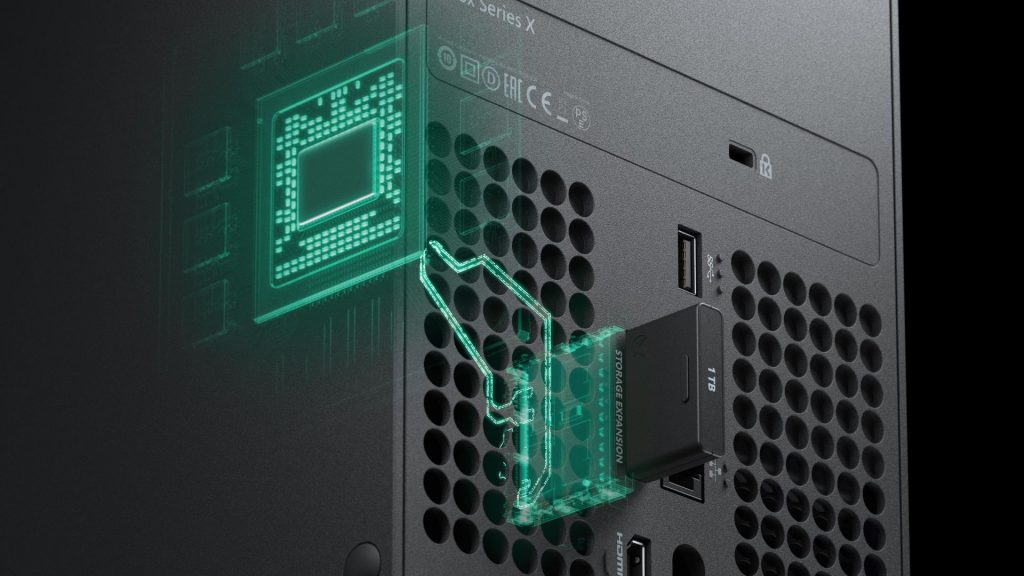
Games have been getting bigger and bigger, not just in terms of scale and scope, but in terms of sheer file size. Rockstar’s Red Dead Redemption 2 is a staggering 115 GB on PC. Even Borderlands 3, a cell-shaded FPS, is over 80 GB, including DLC. Apart from the strain this is putting on people’s broadband data caps (download a few games, stream some Netflix and you’ll hit your cap before two weeks are up), this also puts some questions about the ninth-gen in stark focus.
According to Sony, the PlayStation 5 is set to feature an 840 GB SSD. The Xbox Series X, with its 1 TB SSD doesn’t offer that much more storage. If games expand in size at the rate they’ve been doing in the eighth generation, you might expect 300-400 GB games to be in existence in the next five years or so. But assuming this misses a key point: due to the fundamentally different storage setup on the PlayStation 5 and Xbox Series X, ninth-gen games might not actually be a whole lot bigger than their eighth-gen counterparts.
Keep in mind that both Sony and Microsoft are outfitting their respective consoles with what they feel is a reasonable amount of storage space. Considering that they’ve been working on these products (and working with their first-party studios) for years at this point, it’s reasonable to assume that they have a good idea of how large ninth-gen games will get. The console makers’ bottom lines would be directly affected if gamers can only download and install one or two 400 GB games at a time: people would simply not buy as many games. The only viable reason that Sony would kit out the PlayStation 5 with what seems to be a paltry 840 GB of storage is because the company expects that to be a reasonable amount of space for at least 5-7 games.
While economics gives us strong indirect evidence that ninth-gen games won’t be that much bigger than eighth-gen titles, the technical reasons why are just as compelling and arguably more fascinating. Why will ninth-gen games likely be in the same ballpark file size as eighth-gen titles? And how is this possible, considering the tremendous leap in fidelity, world density and scope that we’re expecting? Let’s take a deep dive and find out.
Why did games get so much bigger over the last generation?
Before looking at the ninth gen, it makes sense to ask why games have been getting bigger til date. If we compare games from 2013-at the very beginning of the eighth generation-to games that released just this year, we see a nearly threefold increase in file size. For example, Alien: Isolation, a survival horror game from the cross-gen era, takes up just 30-35 GB. In stark contrast, Red Dead Redemption 2, a title that released month ago on PC, takes up an incredible 115 GB of storage space, nearly four times as much. Red Dead Redemption 2 is also twice as large as Grand Theft Auto V, Rockstar’s previous title.
What’s fascinating is that average file sizes per game actually appear to be coming down slightly, at least since last year. In 2018 and 2019, we saw some truly gigantic games, like the 148 GB Final Fantasy XV. Even 2016’s Doom, a linear corridor shooter, took up over 70 GB of storage space. In contrast, 2020’s Doom Eternal delivered much more detailed, larger environments, but took up just 35 GB of storage space. And Capcom’s Resident Evil 3 Remake is only marginally larger than Alien: Isolation.
The pattern here is clear to see: from the beginning of the eighth gen, in the cross-generation era, games ballooned in size to the point that a year ago, average install sizes for AAA games were in excess of 60 GB. However, the latest titles on the market, or at least a good chunk of them, appear to have toned down file size without reducing their size or scale at all. How is this possible? It has every thing to do with the peculiarities of the PlayStation 4 and Xbox One’s hardware architectures.
I/O bound: Games expanded in size to cope with slower storage
The PlayStation 4 and Xbox One delivered one of the smallest generational leaps between console generations. Raw CPU power on the PlayStation 4 was actually, in certain workloads, worse than the PlayStation 3’s Cell engine. GPU power was an area of definite improvement. The biggest leap, however, was in terms of system memory. Both the Xbox One and PlayStation 4 delivered sixteen times as much usable system and video memory compared to their predecessors.
They also delivered substantially faster memory. In the PlayStation 4’s case, memory bandwidth was nearly eight times higher than the PlayStation 3. These massive increases to system memory size and speed were not accompanied by an increase in either storage capacity or storage speed. Both the PlayStation 4 and Xbox One shipped with 5400 RPM hard drives. 5400 RPM hard drives have been around for decades. Capacity has increased over time and reflected in how different variants of the Xbox 360 and PlayStation 3 shipped with progressively higher capacity 5400 RPM drives. However, the actual I/O speed on these drives didn’t change. What this means is that I/O speed, the rate at which data on the hard drive is accessed, didn’t change one bit since the Xbox 360 arrived in 2015. It’s been effectively the same for the past 15 years. Why does this matter? Because it has a profound impact on the technical decisions that development teams make regarding how assets are streamed.
To understand this, it’s a good idea to quickly touch on the concept of tiered storage. Computer systems have layers and layers of storage, each which is typically an order of magnitude slower (but also much larger in capacity) than the preceding one. At the top level, you have L1, L2, and L3 caches directly hooked up to CPU. The Cache delivers both the highest amount of bandwidth and the lowest latency (the time it takes a signal to reach), because its physically the most proximate to the CPU. L1 cache deliver as much as 200 GB/s of raw throughput.
This is over 10 times as fast as system RAM, which tends to top out in the 20 GB/s range. It’s also 2000 times as fast as the typical 5400 RPM hard drive, which delivers read/write speeds in the 100 MB/s range. Cache is very limited, even in top-end systems. The Ryzen 9 3950X, for instance, has just 72 MB of L3 cache. System memory is markedly slower. However, it is far larger in capacity. Both the PlayStation 4 and Xbox One have 8 GB of system memory: far, far greater than cache. Storage is even slower, but, of course, far larger in terms of capacity. The discrepancies between the transfer rates on these different types of media mean that certain types of operations take place on different timescales: microseconds, milliseconds, and, well, actual seconds. When a game’s running at 60 Hz, each frame has to be fully processed and displayed in just 16.67 milliseconds.
A 4K texture mipmap can be upwards of 8 MB in size. At 100 MB/s (typical speed on a 5400 RPM hard drive), it would take 80 milliseconds-the equivalent of nearly 5 frames-to transfer that texture information. On the other hand, a console’s system RAM pool can transfer that same amount of data in a matter of microseconds: far, far less than the time it takes the other components of the system to process a frame. In an ideal world, we’d only have that fast storage. That, unfortunately, isn’t how either of eighth-gen consoles is set up. Games are almost always larger than 8 GB, which means that, at any given point of time, the majority of a game’s assets are not on RAM, but on storage.
This generation, developer have devised a number of ways to mask the streaming between the hard drive and system memory. One way they do this is through texture asset duplication. By duplicating a commonly-used asset by, say, 100 times, the hard drive won’t have to a specific location to copy that asset, increasing the effective speed of retrieving that particular asset by several times. Many in-game texture assets–like ground textures–are used repeatedly, making it a good idea to duplicate them. However, with textures themselves increasing in size so much, duplication would mean that a single 4K texture–that takes up just a megabytes by itself–could, along with its duplicates occupy as much as one gigabyte or even more.
The next-gen consoles deliver storage speeds that are 20-50 times greater than the PlayStation 4 and Xbox One. This means that to storage access times have also been cut down-to well within a 16-millisecond rendering budget. This means that developers of ninth-gen titles won’t have to rely on asset dupllication. A commonly used model or texture can be streamed right off the SSD without any noticeable stutter or slowdown as far as the user is concerned. Because asset duplication is no longer a concern, those 8 megabyte 4K textures will genuinely take up 8 megabytes, and not 50 times as much space.
Doom: Eternal is an interesting example where this generation, a development team moved away from a storage and streaming-intensive workflow to a more optimized one. 2016’s Doom utilized id Software’s Megatexture technology. Megatextures were built to circumvent the seventh-gen’s extremely limited memory pool by streaming assets in and out of storage. The legacy tech in 2016’s Doom resulted in a very large game file size because of the massive Megatextures for each level, and noticeable texure pop-in when running the game off a hard drive. Doom Eternal ditches megatextures: artists tile and blend smaller texture assets like in other games. The result was that Doom Eternal looked better–and actually had greater perceived texture quality–while reducing file size by fifty percent.
What this leads us to believe is that ninth-gen games might not get as big as you’d think. 4K video, high quality video, and a larger quantity of authored meshes and assets (for larger, more diverse worlds), will, of course add to the overall bulk. However, by cutting down on asset duplication and other storage intensive techniques, developers will be able to cut down on the “bloat.”


















